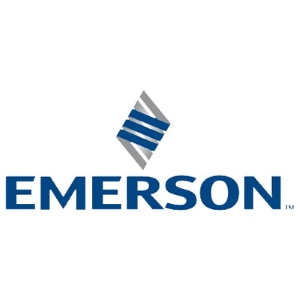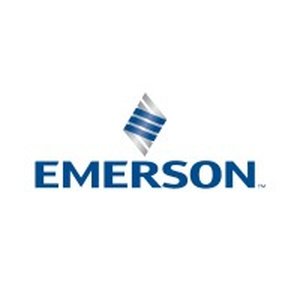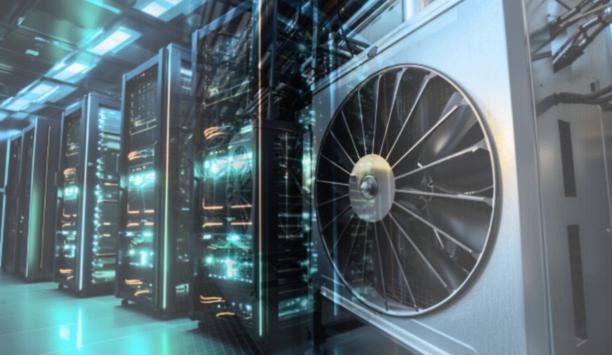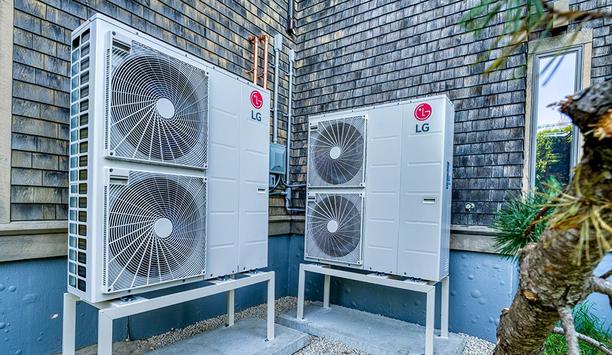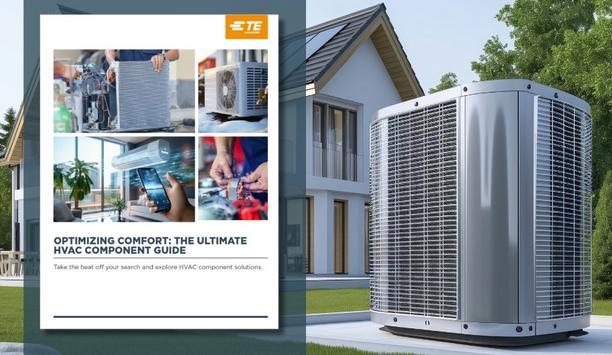Emerson - Experts & Thought Leaders
Latest Emerson news & announcements
Global technology, software and engineering pioneer Emerson will demonstrate how it’s transforming the future of factory automation through its proven Floor to Cloud™ approach and comprehensive portfolio at Hannover Messe in Hannover, Germany, on March 31 to April 4, 2025. Visitors to the Emerson booth will learn how companies of any size can apply a Floor-to-cloud approach to drive sustainable growth, maximize performance quality, and unleash workforce productivity for immediate and long-term success. Emerson experts in the Innovation Theater Located in the Automation, Motion & Drives area, booth C30 will feature immersive protests and displays Located in the Automation, Motion & Drives area, booth C30 will feature immersive demonstrations and displays. This interactive hub will showcase how products from ASCO™, AVENTICS™, Branson™, Movicon™, PACEdge and PACSystems™ brands combine to form intelligent solutions that transform operations across the factory floor and deliver ongoing value. Scheduled presentations from Emerson experts in the Innovation Theater give visitors the opportunity to solve complex industry challenges and pathways to achieve a wide range of goals. Topics include driving sustainable growth, energy savings and efficiency, and proportional pressure control in robotic applications, as well as real customer success stories. Event highlights Emerson will also host an invite-only press event at the booth. The exclusive event, Future Talks, will feature a panel discussion from industry experts and Q&A. Representatives from associations, partner companies and academic institutions will discuss such topics as the future of sustainability in manufacturing and the role of AI and automation in industrial applications. Further details will be announced closer to the show opening. Product highlights AVENTICS Series XV Pneumatic Valves Series XV valves include the XV03, providing flow volumes up to 350 liters NL/min Next-generation AVENTICS Series XV pneumatic valves offer greater range and flexibility with higher flow rates to give original equipment manufacturers greater design flexibility and scalability when engineering handling systems or automation solutions. Designed with interoperability in mind, the new Series XV valves include a broader range of configurations and use proven core valve AVENTICS technology. Providing higher flow rates in a compact valve package, Series XV valves enable more efficient and flexible pneumatic system performance while offering products customized for specific markets, including factory automation, automotive and tire, food and packaging applications. Series XV valves include the XV03, providing flow volumes up to 350 liters NL/min, and the XV05, which can provide up to 1000 NL/min. AVENTICS Series AF2 Flow Sensor AVENTICS Series AF2 Flow Sensors have helped plants around the world successfully reduce compressed air consumption and improve energy efficiency. By monitoring air consumption in pneumatic systems, AF2 sensors enable rapid intervention if leaks occur, helping optimize energy consumption, reach net-zero targets, prevent machine downtime, and reduce costs. Emerson also offers a high-flow model of this advanced sensor that propels compressed air monitoring beyond individual machines to benefit larger air lines and systems. This expanded capability allows users to easily optimize energy consumption across an entire packaging facility and improve overall plant sustainability. Energy Manager New Energy Manager solution from Emerson alters energy challenges into options Designed to help manufacturers cut energy costs and carbon emissions by up to 30%, the new Energy Manager solution from Emerson transforms energy challenges into opportunities. Machine tools are energy-intensive, even when idling. This plug-and-play system offers real-time electricity monitoring to identify and minimize waste, optimizing energy use and boosting operational efficiency. With quick setup and intuitive operation, the Energy Manager provides detailed insights into energy consumption and operating costs, allowing plant managers to reduce idle consumption and peak loads. This application can also be used in conjunction with the Compressed Air Manager solution, offering a scalable, comprehensive view of energy and utility consumption. Software Solutions The manufacturing facilities require modern automation technology that can readily adapt and meet changing production and operational requirements. Success increasingly depends on advanced SCADA solutions that seamlessly integrate diverse systems and assets, often over wide geographic areas, while maintaining robust cybersecurity. The Movicon industrial software platform delivers the next generation of SCADA/HMI connectivity and operability through modular, scalable, and secure interfaces. The innovative suite of tools includes Movicon Pro.Lean™, which harvests real-time production and performance data that can be used to reduce waste and increase profitability, and Movicon Pro.Energy™, which measures energy consumption and can guide decisions around sustainability and efficiency strategies. Programmable Automation Control Systems PACSystems controllers add a new dimension to industrial control and automation Industrial operations now need a flexible, scalable, and affordable approach to modernization. PACSystems controllers add a new dimension to industrial control and automation, allowing production optimization and monitoring capabilities in the widest range of process and discrete industrial environments. These automation control solutions bring control intelligence with a real-world approach to identify and predict impending failures, enable proactive maintenance, boost cyber security, and customize data acquisition and analytics — so businesses can minimize downtime and handle market changes with agility. Core Emerson automation control innovations include the PACSystems RX3i CPL410 and CPE330 controllers, which offer extensive flexibility for a range of applications, as well as the RSTi EP I/O, which combines powerful controller technology in a modular, compact form factor with a full range of slice I/O to maximize productivity. Cylinders and Actuators Emerson cylinders and actuators are designed to exceed performance standards and stay within footprint, no matter how compact or demanding the application. The comprehensive range of high-quality cylinder technology meets the demands of modern automation applications. Whether designs require pneumatic, electric, or hybrid solutions, AVENTICS cylinders and actuators increase the overall performance and flexibility of machines. Core innovations include the AVENTICS Series SPRA electric rod-style linear actuator, which is an efficient, high-performance actuator that offers improved load capacity, accuracy, and reliability. The AVENTICS CylinderFinder is an easy-to-use online tool that makes it simple to find the perfect cylinder for an application. Edge Devices Emerson edge devices combine the best deterministic controls on the market with secure Emerson edge devices combine the best deterministic controllers on the market with secure, nondeterministic controllers for analytics and machine learning algorithms to proactively optimize business outcomes. These rugged devices are designed for remote industrial areas and equipped with the vendor-agnostic PACEdge software to safely run nondeterministic applications. This reduces latency and meets all application performance requirements. Compressed Air Manager The Compressed Air Manager provides visualization and benchmarking for compressed air and gas consumption for a machine, for a production line, or across multiple sites. A predesigned, edge-enabled cabinet solution serves as a foundation to connect and power monitoring across multiple machines and lines via AVENTICS Series AF2 smart airflow sensors. The Compressed Air Monitoring App, which comes pre-installed on the edge device, is easily configurable and continuously monitors and analyzes data coming from the sensors. The Compressed Air Manager transforms available data via an embedded dashboard with KPIs where operators can easily visualize consumption trends, costs, benchmarks, and CO2 impact. This data empowers users with greater insights to help reduce energy costs, improve sustainability, and streamline maintenance. Material Joining and Cleaning Technologies Branson technologies from Emerson include ultrasonic welding for plastic and metal The quality of automotive parts, medical devices, electronic components, and other essential products depends on high-performance material joining and cleaning technologies. Backed by innovation and worldwide support, Branson technologies from Emerson include ultrasonic welding for plastic and metal, as well as laser, vibration, infrared & spin welding, and staking for plastic, as well as ultrasonic cleaning solutions. Core welding innovations include the Branson GSX-E1 ultrasonic welder, which produces clean welds in minimal time with highly uniform joints for greater consistency and operational efficiency. AVENTICS Feeding & Handling Solutions AVENTICS Feeding and Handling Solutions provide manufacturers with a broad portfolio of standardized systems, modular assemblies, and advanced components for plug-and-play productivity. The innovative AVENTICS feeding portfolio features unique vibration force compensation technology and offers everything from proven vibratory feeders, refilling devices, and control units to flexible feeding technology components. With standardized components in a modular system, station layouts can be adapted exactly to meet application requirements, minimize gap dimensions, and improve the precision of feeds and availability of the feeding system. AVENTICS handling portfolio offers more than 20 standardized handling systems that can be configured online, optimized, and delivered as plug-and-play solutions for demanding pick-and-place applications. Combining high-speed performance, consistent precision, and long service life, AVENTICS handling systems help manufacturers shorten cycle times, boost throughput, and lower costs in handling applications on the production line.
Emerson has launched its new AVENTICSTM DS1 dew point sensor, the only industrial sensor to monitor dew point, temperature, humidity levels and quality of compressed air and other non-corrosive gases in real-time from one device. The DS1 can help operators detect and mitigate excess moisture in its early stages and prevent moisture-related equipment damage. By optimizing air quality in this way, operators can better control processes, extend pneumatic component life, ensure regulatory compliance, and reduce maintenance and unplanned downtime. pneumatic systems Pneumatic systems power manufacturing processes across the plant floor in most industries Pneumatic systems power manufacturing processes across the plant floor in most industries, from pharmaceuticals and food and beverage to semiconductor and automotive. Excess moisture in pneumatic systems can cause multiple issues, including corroded components, product inconsistency, and erratic processes. Industrial sensors While most industrial sensors only monitor humidity, the DS1 provides precise dew point monitoring that makes it possible for manufacturers to continuously track critical values, address excess moisture and prevent its negative effects. For instance, moisture can affect process reliability by corroding components, washing the lubrication out of moving parts, and extending switching and reaction times. Ideal air quality Ideal air quality is also critical in instances where compressed air may come in contact with consumer products, such as pharmaceuticals or food. Condensate in compressed air can cause discoloration, texture inconsistency, and bacterial growth. The DS1 provides essential data that facilities need to maintain a stable dew point and protect product quality. And if there are regulations around air quality, the DS1 can help companies meet requirements and maintain compliance. AVENTICS DS1 dew point sensor “By having greater certainty about compressed air quality and control over moisture levels in compressed air lines, manufacturers of all kinds can prevent a number of common condensate-related issues and their associated costs,” said Manuel Goerbert, Product Marketing Manager of Discrete Sensors at Emerson. He adds, “The new AVENTICS DS1 dew point sensor allows operators to detect changes in air quality in real-time with a single device, so they can quickly make necessary adjustments to optimize production and increase overall process reliability.” Advantages of an integrated dew point sensor One of the key advantages of an integrated dew point sensor is the ability to place the sensor To support industrial digital transformation strategies, the DS1 dew point sensor easily integrates into existing systems, including the AVENTICS Series AS3 and AVENTICS Series 652 air preparation units, and connects to networks via Modbus TCP (PoE). One of the key advantages of an integrated dew point sensor is the ability to place the sensor – and track conditions – close to the process rather than where the compressed air is generated, which can be far from the process itself and have much different conditions. DS1 measurement values The sensor element is condensation-resistant and provides long-term, drift-proof performance. With fast response time, DS1 measurement values include pressure dewpoint, temperature, relative humidity, absolute humidity, moisture content, moisture content V/V, water vapor partial pressure, and atmospheric dew point. The DS1 is also suitable for other non-corrosive gases, including nitrogen, oxygen, argon, helium, and sulfur hexafluoride.
The Ghana Mega Clima Show 2025, organized by Elan Expo, takes place from November 26-28, 2025 at the International Convention Center in Accra, Ghana. New Era In HVAC Innovatıon With a projected compound annual growth rate (CAGR) of 9.2% from 2024 to 2030, the Ghana HVAC market is expanding rapidly due to urbanization, rising temperatures, and increasing demand for efficient cooling solutions. The market is expected to reach $258.3 million by 2029, supported by investments in residential and commercial infrastructure. Accra, as the capital city, has several ongoing and potential construction projects that require advanced HVAC systems. Notable projects include the $1.9 million air conditioning and refrigeration test lab recently opened in Accra. Additionally, ongoing projects such as the $150 million redevelopment of the Accra Mall and the construction of new hotels like the Marriott Accra Airport Hotel are driving demand for advanced HVAC solutions. Ghana Energy Commission's regulations The Ghana RAC Roadmap aims to accelerate the transition to climate-friendly sustainable technologies The Ghana Refrigeration and Air Conditioning (RAC) Roadmap aims to accelerate the transition to climate-friendly sustainable technologies, with a goal of reducing greenhouse gas emissions by promoting 380 green air conditioning units through demonstration projects and training programs for technicians. The split AC sub-sector is particularly impactful, accounting for about 8% of national GHG emissions, highlighting the urgent need for sustainable solutions. The government is actively promoting energy efficiency through projects like the Ghana Energy Commission's regulations on energy standards and mandatory certification for HVAC technicians. Ghana's HVAC sector Despite this growth potential, the HVAC market in Ghana faces challenges such as underdeveloped distribution channels, a lack of skilled professionals, and affordability issues for consumers. By participating in the HVAC Fair Show, companies will have a unique opportunity to not only showcase their innovative products and technologies but also address the urgent needs of the Ghanaian market. This event serves as a critical platform for networking with industry pioneers, decision-makers, and stakeholders, fostering valuable collaborations and networks that can enhance service delivery, expand market presence, and, lastly, make their brands stand out in the HVAC industry as a pioneer. As Ghana's HVAC sector continues to grow, businesses that engage in this fair will position themselves at the forefront of industry advancements, gaining insights into emerging trends and consumer demands. First Mega Clima Show in Ghana The First Mega Clima Show in Ghana is a pioneering event set to reshape the HVAC landscape in West Africa The First Mega Clima Show in Ghana is a pioneering event set to reshape the HVAC landscape in West Africa. Organized by Elan Expo, a pioneer in international exhibitions with 25 years of extensive experience in the region, this show promises to be a compelling opportunity for industry stakeholders to connect, collaborate, and innovate. Elan Expo has successfully organized similar shows in Nigeria, Algeria, and Kenya, establishing itself as a trusted name in the HVAC sector in the African region. The previous events have consistently attracted significant participation and engagement rates and generated impressive results. Mega Clima Nigeria 2023 For instance, the recent Mega Clima Nigeria 2023 attracted over 8,600 visitors and featured 172 brands from 25 countries notably from Algeria, Belgium, China, Egypt, Germany, Ghana, India, Italy, Japan, Lebanon, Nigeria, Poland, Russia, South Korea, Spain, Turkey, United Arab Emirates, United Kingdom, United States, including well-known brands like Panasonic, Daikin, Carrier, Trane, Mitsubishi Electric, LG Electronics, Fujitsu, Honeywell, York, and Gree, Rheem, Toshiba, Sanyo, Bosch, Emerson, and Chigo. In total, the events across the region have welcomed over 30,000 visitors and showcased more than 600 brands from around the world. The past exhibitions have consistently demonstrated the value of participation; for instance, exhibitors reported that over 80% of them found new business opportunities and expanded their networks in a meaningful way. Exploring innovative technologies Mega Clima Show will attract an amount of diverse participants showcasing and exploring technologies Drawing on the extensive experience from previous successful events, they anticipate a similarly impressive participation in Ghana. Therefore, they want to bring together key players once again in Ghana’s HVAC market. With urbanization on the rise and increasing demand for sustainable cooling solutions, they anticipate that the Mega Clima Show will attract a remarkable amount of diverse participants showcasing and exploring innovative technologies that enhance energy efficiency and sustainability. The Ghana Mega Clima Show will undoubtedly serve as a premier platform for exhibitors to showcase their latest products and services specialized for the HVAC industry. Promising To Shape Industry Standards "The Mega Clima Show is set to be a novel event for the HVAC industry in Ghana," stated Mr. Süer AY, General Manager of ELAN EXPO, adding "This is the first time we are launching this show in Ghana, which provides the opportunity for international exhibitors for the first time in this region to showcase their products and innovative technologies, connect with industry pioneers and stakeholders, foster collaboration and innovation in a professional environment." He continues, "This event is not just about showcasing products; it is an opportunity to drive the adoption of sustainable technologies and practices that will significantly influence the growth and efficiency of the HVAC sector in Ghana. By bringing together key players in the industry, we aim to address current challenges, share best practices, and ultimately shape a more sustainable future for climate control solutions in West Africa." "Now is the time for companies to seize this opportunity to contribute to a more efficient and sustainable future in the HVAC industry, helping to shape the industry of Ghana’s rapidly evolving HVAC market while guaranteeing their own growth and success." Mr. Süer AY emphasized. Save the date Dates: November 26-28, 2025 Location: Accra International Conference Center, Castle Rd, Accra, Ghana Exhibitor Profile: Ventilation & Air Conditioning Systems and Equipments, Heating Systems and Equipments, Refrigeration Systems and Components, Installation Systems, Installation Systems.
Insights & Opinions from thought leaders at Emerson
AHR Expo 2024 was abuzz with activity, befitting a dynamic industry in the throes of change. Industry developments such as electrification and the refrigerant transition render business opportunities on the AHR Expo show floor, where exhibitors display a determination to meet the challenges and thrive in the process. Walking from booth to booth during the three-day show in Chicago, I saw the best the HVAC industry has to offer, up close and personal. Innovation and adaptability are the watchwords as the industry journeys into 2024 and beyond. Refrigerant Transition Top of Mind Patented R-454B refrigerant enables a simpler transition without redesigning equipment The technology transition is well underway for OEMs seeking to meet a pending AIM Act deadline at the end of the year. OEMs are choosing to embrace either R-32 or R454-B refrigerant to replace legacy R-410A, which is being phased out. Patented R-454B refrigerant enables a simpler transition without redesigning equipment, while R-32 offers advantages such as higher capacity, higher efficiency, and easier cradle-to-cradle management. Arkema Arkema is the only producer of R-32 refrigerant in the United States. The newer refrigerant is being embraced as HVAC OEMs seek to meet the deadline of Jan. 1, 2025, to use lower-GWP (global warming potential) refrigerants in their products. The technology transition is just part of the AIM Act implementation that will also limit allocation and require refrigerant management. Chemours Chemours is a manufacturer of R-454A, R-454B, and R-454C refrigerants. At AHR, they presented hourly education sessions on a variety of subjects. The refrigerant transition will impact everyone in the industry, including refrigerant producers, equipment manufacturers, contractors, and end users. R-454B refrigerant provides identical performance in HVAC systems compared to the previous refrigerant (R-410A). There is less need to redesign equipment; just adding sensors for leak mitigation can address the mild flammability of A2L refrigerants. Because of the 2025 deadline, 2024 will be the “year of new products” in the HVAC market. OEMs pioneering Innovation Carrier and others are offering smaller footprints, seeking to meet environmental targets Innovation in the HVAC market is led by companies such as Carrier, which has introduced 100 new products each year for the past eight years. Carrier and others are offering smaller footprints, seeking to meet environmental targets, and providing flexibility for customers. New products include the AquaSnap 30RC air-cooled chiller and the AquaEdge 19MV chiller with low GWP refrigerant to meet pending regulatory requirements. Copeland Copeland, recently divested from Emerson, also emphasizes innovation, including 12 research and development (R&D) facilities, 1,700 engineers, and more than 3,000 patents. At a press conference at AHR Expo, the 100-year-old company announced it is a “new” company owned by Blackstone Private Equity. Products featured Among the featured products at AHR are Copeland’s oil-free centrifugal compressor with Aero-lift bearing technology; and Copeland’s CC200 case controller, specifically designed to handle the unique challenges of the current retail grocery refrigeration environments. Copeland also pledges to play a role in educating the market about new trends and the transition to new refrigerants. Emphasizing a Smaller Footprint Trailblazer AGZ-F is an R-32 air-cooled scroll chiller that delivers 10% greater capacity and efficiency Daikin Daikin highlights the Atmosphera, a single-zone ductless split system (using R-32) that can reduce carbon emissions by 80% (compared to R-410A). Also, Trailblazer AGZ-F is an R-32 air-cooled scroll chiller that delivers 10% greater capacity and efficiency. Products emphasize a smaller footprint and less weight than their predecessors. Rebel Applied is a packaged rooftop unit that continually adjusts operation to address the building load, consuming less energy. Trailblazer HP is an air-to-water heat pump chiller with a reversing function that allows the product to switch between cooling and heating based on temperature requirements. Friedrich Air Conditioning Friedrich Air Conditioning features the Breeze universally flexible inverter heat pump, a ducted mini-split for upgrading traditional equipment. It works with any furnace or air handler, has side discharge, is 40% smaller, and is cold weather capable to minus 13. Friedrich's new Vert-I-Pak is a line of M1-compliant single package Vertical Heat Pumps (available in 9K, 12K, 18K, and 24K Btu), supporting decarbonization efforts with heat pump operation down to 10°F. High Efficiency for Commercial and Residential Johnson Controls Johnson Controls exhibits their highly efficient residential and commercial HVAC solutions designed for Department of Energy (DOE) 2023 compliance and helping customers achieve Net Zero goals through decarbonization. On display was the York High-Efficiency 18 SEER2 Side-Discharge Heat Pump with up to 30% smaller footprint than vertical-discharge equipment. Johnson Controls-Hitachi Air Conditioning's Aircore 700 single split system is aimed at light commercial and residential. Midea Their 3-ton model achieved 118% of rated capacity heating output at minus 15 degrees Fahrenheit Midea, known for selling consumer products, has kept a low profile in the professional sector, selling products that are either OEMed for Carrier or private-labeled by a contractor company. Seeking to promote the Midea brand, the Chinese company is staking its claim on the trade market with an emphasis on performance: The company exceeded performance in the Department of Energy’s “ColdClimate Heat Pump Challenge:” Their 3-ton model achieved 118% of rated capacity heating output at minus 15 degrees Fahrenheit. Heat pump awareness Results of a survey conducted by Midea show that more than half of homeowners are not fully aware of heat pumps and their function. Awareness lags among contractors, too: 70% of contractors indicate they do not know that the current’s advanced heat pumps can generate 100% heat output to a minimum temperature of minus 4 F. Wide Selection of New Products Mitsubishi Electric Trane HVAC US Mitsubishi Electric Trane HVAC US emphasizes all-electric heat pump solutions. The Deluxe Wall-mounted H2i sumo System connects with an outdoor unit, and the intelli-HEAT dual fuel system can determine the best source of heat – electric or gas – on cold days. Among commercial products, Heat2OHeat Pump Water Heaters are designed to produce high-volume domestic hot water for commercial facilities in any climate. LG Electronics LG Electronics’ booth includes a wide product range, including advanced heating, ventilating, air conditioning LG Electronics’ booth includes a wide product range, including advanced heating, ventilating, air conditioning, and building management solutions for residential and commercial applications. Home electrification products include the LG R32 Air-to-Water Heat Pump Monobloc system; the LG Inverter Heat Pump Water Heater the LG Electronics Home 8 Energy Storage System, and ThinQ, LG’s mobile app. LG Art Cool Gallery multi-zone wall-mount indoor unit The LG Art Cool Gallery multi-zone wall-mount indoor unit features a customizable picture frame that doubles as a cooling and heating vent. Also, LG’s Medium and High-Temperature Hydro Kit Systems use a refrigerant-to-water heat exchanger to produce chilled or heated water. LG’s Split Compact M3 DOAS with Multi V S is suited to light commercial use where single-phase power is available and as an HVAC solution for outdoor air treatment. Easier Access for Technicians Rheem Manufacturing New equipment at the Rheem Manufacturing booth at AHR Expo includes true multi-zone operation, smaller footprints, lighter weights, and components that are positioned for easy access by technicians. An LED in the control cabinet displays a fault code that identifies the problem to service technicians. The Resolute and Renaissance lines are commercially packaged heat pump units. The company is emphasizing the transition from R-410A to R-454B refrigerant by the end of 2024. Aeroseal Whether a new install or a retrofit, the product saves energy, saves money, and keeps customers compliant Aeroseal seals ducts by spraying a vinyl acetate polymer substance to increase HVAC efficiency. Whether a new install or a retrofit, the product saves energy, saves money, and keeps customers compliant, and a 30% tax deduction is available through the U.S. Inflation Reduction Act (IRA). Airzone Airzone is a Spanish company that controls inverters and VRFs (variable refrigerant flow units). Their communication gateway controller incorporates protocols from various manufacturers, and the Easyzone is an easy-to-install zoning system. Infinitum Infinitum manufactures a motor system that leverages a printed circuit board as a stator, making the motor system lighter weight and also smaller, quieter, and more efficient. The Aircore EC uses a standard printed circuit board manufacturing process to eliminate bearings. The component is used in blowers by OEMs Lau, Acme, Canarm, and Peerless, whose products are displayed at the booth. Bell & Gossett Bell & Gossett debuts its line of smart, connected products designed to improve sustainability Bell & Gossett, a Xylem brand, debuts its line of smart, connected products designed to improve the sustainability of commercial buildings and reduce complexity in the design process. Combining pumps and smart motors are the e-1510 end-suction pump, e-80 vertical in-line pump, and TECHNOFORCE e-HV packaged booster system. NIBCO Simplifying the job of an HVAC installer is the PressACR copper press connection system from NIBCO, which connects copper pipes without brazing, which involves soldering and high temperatures, thus a fire hazard. The patent-pending groove design and crimp pattern support the higher-pressure requirement of an HVACR system. Pipes are pressed together using PressACR jaws and adapter jaws in a variety of sizes. NIBCO also displayed its Webstone brand of residential and commercial valves. Control Products Provide Data Resideo Resideo displayed home system products, including the Honeywell Home T10+ thermostat with RedLINK 3.0; sensors enable temperature balancing for hot and cold spots. Pro-IQ Services provides software tools designed for the connected home, including insights on heating, cooling, water, and indoor air quality devices to help contractors track customers. Professional-grade water damage prevention, the First Alert L2 WiFi Water Sensor and Switch provide alarms if there is a water leak. Schneider Electric The EcoStruxure Building Operation system is open system software for building and facility management Schneider Electric seeks to be “digital partners for our customers,” working with Fortune 500 companies seeking to achieve ESG (environment, social and corporate governance) goals. They help customers establish where they are currently vis-à-vis their goals and then deploy science-based key performance indicators (KPIs) to direct them to where they want to be. The EcoStruxure Building Operation system is open system software for building and facility management, including two products for the small and medium building (SMB) market. Energy measurement Schneider measures energy usage through power meters, indoor air quality, and energy spent to achieve efficiency, compiling data according to what the customer wants to achieve. They sell through a national sales team, direct branch business (20 branches), and 200 system integrators (EcoXperts). Their customers include QSR (quick-service restaurant chains) that control climate centrally with data compiled in the cloud. Siemens Siemens displays solutions for smart, adaptable buildings for a sustainable tomorrow, including the Building X system and the Sustainability Manager application, providing an understanding of a building’s performance and tracking it against sustainability and compliance targets. The Building X Lifecycle Twin tracks operational building performance via a “digital twin,” providing an augmented reality (AR) headset through which one can view equipment with information superimposed on the screen. Uponor Uponor seeks to leverage the capital cost of heating systems to deliver heating and hot water. They make pipes and connectors and other technologies, including the AuqaPort, which improves water quality and energy savings in domestic hot water (DHW) applications. They seek to future-proof buildings by combining energy efficiency and comfort. Water recirculates and provides hot water on demand using 40% less piping. A “radiant roll-out mat” is preconfigured piping that can be rolled out to simplify installation.
Businesses in the HVAC market were high-profile participants at the COP28 conference in Dubai. Several big HVAC companies had a presence at the conference, and the industry’s technologies are an important tool to achieve the conference’s stated climate goal of net-zero global greenhouse gas emissions by 2050. COP28 The Conference of Parties of the United National Framework Convention on Climate Change (COP28) took place Nov. 30-Dec. 12 in Dubai. Some 35,000 people were involved in negotiating the next stage of strategies to address the climate crisis. Attendees included pioneers from international organizations, national and local governments, non-governmental organizations (NGOs), and pioneering companies. About 15% of attendees at COP28 represented various business and industry sectors. Global Cooling Pledge They pledge to pursue the goals through better energy efficiency, a climate-friendly approach An outcome of the conference is the “Global Cooling Pledge,” intended to increase efforts and cooperation through joint targets to reduce greenhouse gas (GHG) emissions related to cooling. The pledge is a series of commitments by governments to accelerate emission reductions from energy use and refrigerants toward near-zero emissions. They pledge to pursue the goals through better energy efficiency, a climate-friendly approach, and expanding access to sustainable air conditioning. Decarbonization “Decarbonization of the buildings sector is an imperative for meeting global climate targets,” commented Katie McGinty, Vice President and Chief Sustainability Officer of Johnson Controls. “The technology exists to make near-zero emissions and climate-resilient buildings the new normal by 2030.” net-zero building technologies Working together, pioneers across civil society and the private sector can rapidly deploy these climate solutions" Johnson Controls is committed to helping to drive leadership on net-zero building technologies into the future. At COP28, the company sponsored a kick-off event panel discussion on decarbonizing the built environment. “Working together, pioneers across civil society and the private sector can rapidly deploy these climate solutions affordably, accelerating adoption of the technologies at a time when they are most needed, and can do the best,” said McGinty. sustainable cooling Recognizing the need to act on cooling, industrial equipment provider Danfoss joined with more than 60 government and other pioneering corporations to endorse the Global Cooling Pledge to support sustainable cooling. Action is needed to limit global warming to 1.5 degrees C (2.7 degrees F). “Cooling is one of the biggest societal opportunities of our time,” said Jürgen Fischer, President, of Danfoss Climate Solutions. “It is needed everywhere to cool our food, our buildings, and our vaccines. It brings health, growth, and food security for the world’s population.” climate-friendly cooling technologies However, the Global Cooling Pledge needs to extend beyond a pledge and result in action However, the Global Cooling Pledge needs to extend beyond a pledge and result in action, says Fischer. “We must now see [the implementation] of technologies readily available today [to] spread sustainable, energy-efficient and climate-friendly cooling technologies around the globe.” In addition to commitments by governments in the Global Cooling Pledge, there are also calls for cooperation in the private sector. It requires the support of private companies, financial institutions, and other entities to help governments achieve the goals outlined in the pledge. centrally powered chiller Cooling of buildings represents more than half of electricity consumption from cooling and is the most important driver for peak electricity demand. Energy demand from the cooling of homes is expected to grow threefold by 2050 if no measures are taken. One approach to minimizing global warming is district cooling, which saves up to 50% of energy usage by circulating chilled water through pipelines to cool buildings. A centrally powered chiller can shift cold-water production away from peak hours and adapt to renewable energies. cooling-related emissions Daikin Industries exhibited its highly efficient inverter air conditioners, which contribute to 50% energy savings “District cooling and the phase-out of refrigerants with a high impact on global warming are two examples of many that can make a difference,” says Fischer. “Technologies and solutions to reduce cooling-related emissions are already in use around the world, and I urge the pioneers behind the Global Cooling Pledge to see them in action. Seeing is believing.” At the COP28 Japan Pavilion, Daikin Industries exhibited its highly efficient inverter air conditioners, which contribute to 50% energy savings. low-GWP refrigerant R32 “As a pioneering air conditioning company with global operations, Daikin has led the industry in promoting the use of high-efficiency inverter air conditioners and the low-GWP refrigerant R32,” says Katsuyuki Sawai, Senior Executive Officer, of Global Environment, for Daikin. “These efforts are in line with the direction of the Global Cooling Pledge and will continue to expand these initiatives around the world to help achieve the goals of the pledge.” high-efficiency inverter air conditioners Variable-speed high-efficiency inverter air conditioners precisely control the rotation speed of the air conditioner Variable-speed high-efficiency inverter air conditioners precisely control the rotation speed of the air conditioner compressor in line with ambient conditions to reduce electric power consumption. While the ratio of air conditioners equipped with inverter technology has reached nearly 100% in the Japanese and European markets, such levels are still low in the rest of the world, including the United States, the Middle East Africa, and Asia. More awareness of this equipment is needed. Broader usage would have an immediate impact, says Daikin. reducing carbon footprints Emerson, a global automation software and technology company, also lent its voice and expertise to the conversations at COP28. “It is encouraging to see how many companies are working to reduce their carbon footprints and engage with clean energy innovations,” said Mike Train, Emerson’s Chief Sustainability Officer. “Across the globe, there are ground-breaking, at-scale examples in hydrogen, EV batteries, biofuels, energy and emissions management, circularity, grid resiliency, and more.” Reimagine the Future of Energy Mathias Schinzel, Emerson’s Middle East and Africa President, participated in the world’s largest youth energy summit Train says collaboration is key to designing and building projects, putting productive policies and processes in place, and driving investment into broader adoption. At COP28, Mathias Schinzel, Emerson’s Middle East and Africa President, participated in the world’s largest youth energy summit under the theme of “Reimagine the Future of Energy.” digitalization and artificial intelligence The company also participated in Climate Action’s Sustainable Innovation Forum panel discussion on how digitalization and artificial intelligence (AI) can accelerate business models to support sustainable circularity. In addition to participating in other panels, Emerson was a Climate Supporter for COP28 and provided an innovation exhibit in Expo City highlighting technologies to decarbonize traditional industries while accelerating energy sectors like hydrogen, biofuels, and electrification.
Data-driven control of centralized home and building HVAC systems is helping to minimize energy usage, lessen sustainability concerns, and provide greater levels of comfort for lower costs. However, room air conditioners are globally the fastest growing segment, each operating independently with the aid of a remote control. How can the lessons and capabilities of data-driven control systems be applied to the world of room air conditioners? Sensibo is looking to do just that. Sensibo aims to be the brains of an indoor climate system, using data to provide the best comfort, energy efficiency and air quality to every home and office. The company’s systems connect to ACs and may be remote-controlled via a mobile app, along with full integration with Google Assistant, Alexa, Siri, and Apple HomeKit. HVAC systems The backgrounds of Sensibo founders Ran Roth and Omer Inbar are not in the HVAC market. Coming from the world of data and artificial intelligence (AI), they were looking for an industry that could benefit from data more than it was. Constituting a quarter to a third of the energy used by humanity and representing substantial sustainability challenges, the HVAC market had the potential to benefit greatly from an approach using data, computational power, and machine learning. Computational power to leverage the data points into knowledge of how to control the HVAC systems In fact, Ran Roth, Sensibo’s CEO and co-founder, says there were two major elements previously missing from how HVAC systems were controlled. The missing elements were data points, provided by various sensors and other information, and computational power to leverage the data points into knowledge of how to control the HVAC systems. “The combination of computation power in the cloud and more data from systems can save a lot of energy, 20% on average,” says Roth. Sensibo control systems Emerging control systems such as Nest, Ecobee, and Emerson’s Sensi provide high levels of control for centralized HVAC systems, but what about the 87% of systems that use room air conditioners? How can new technologies address this fastest-growing market segment? Sensibo’s low-power solution controls any room air conditioner that uses a remote control and is among the easiest systems to install for do-it-yourself homeowners. Some 99% of users install the units themselves. Sensibo control systems communicate using the infrared remote-control protocols of the 30,000 or so available models of room air conditioners. The company mapped out more than 1,000 protocols used by various models, and “reverse-engineered” them to be controlled by the system, a process that took about three years. The technology is also compatible with variable refrigerant flow (VRF) and mini-split ductless systems – basically any system that uses a remote control. Sensibo’s mobile application Sensibo’s mobile application suggests recommendations based on a user’s behavior patterns In the area of artificial intelligence (AI), Sensibo recently integrated OpenAI’s ChatGPT into its smart AC products. The advanced language model uses a deep learning architecture called transformers. For the first stage of integration, Sensibo’s mobile application suggests recommendations based on a user’s behavior patterns, such as an automated AC schedule based on the customer behavior of the user and climate react personal recommendations. “Since we come from the field of AI, we are very excited about the recent developments (regarding ChatGPT),” says Roth. “There is a lot of hype, but there are also results beyond the hype. We were amazed by what it could do.” Traditional approaches Sensibo is using the new technology to fine-tune products and to improve how they process results, with more accuracy and better cost-effectiveness. “With Chat GPT, you get both good results, and you can understand why,” says Roth. The company expects to see additional uses for the technology over time. Traditional approaches to analyzing AC data require a lot of fine-tuning in terms of signal processes. Advanced language models and other new technologies make it easier to develop a smart system at scale. “We can analyze data in new ways and come up with new answers and fewer customizations,” says Roth. “It’s a game changer.” Environmental elements Sensibo collects more than a billion data points a day from more than a million unique uses Sensibo systems collect more than a billion data points a day from more than a million unique uses by customers. The resulting data, including factors such as humidity and temperature, and air quality elements such as volatile organic compounds and carbon dioxide, enables computations that allow the system to control environmental elements more precisely. The system also considers factors such as local weather conditions based on geolocation, and presence sensors that let the system know if a home or room is occupied. “We found that around 37% of people use a totally incorrect temperature on (their thermostat setting),” says Roth. “Because of various circumstances they may never reach the target temperature and then you spend more and more energy in an ineffective way.” The system also analyzes air quality indoors versus outside and may advise a user to open a window for greater ventilation, for example. Sensibo’s technology Interfaces and notifications are provided through a smartphone, and the system’s application programming interface (API) enables integration with 100 home automation systems and with programs of utility companies, which might subsidize or pay for the unit. Directing power usage to non-peak hours, the system saves money for consumers and helps utility companies shift usage patterns to be the most cost-effective. “If a house is insulated, you can pre-cool before you arrive home from work (in a non-peak period) for less money,” says Roth. Sensibo’s technology is not compatible with smart thermostats. Currently, Sensibo sells mostly through Amazon and the company website Currently, Sensibo sells mostly through Amazon and the company website. They are looking to expand their distribution in big-box stores and to work with professional HVAC installers and trade distribution. “It’s a product people love,” says Roth, who urges interested HVAC installers to contact the company through their website. Customer Involvement A benefit of the product is greater customer involvement in how their AC system operates. They might use the app several times a day, which provides greater potential to connect and, possibly, more service and maintenance opportunities for HVAC professionals. “Part of our philosophy is that indoor climate is not just about heating and cooling,” says Roth. “The gases around us are more than just how we feel. We see air quality as part of the same system. Currently air quality systems are disconnected from the heating and cooling systems, but they should be the same systems.”
Leveraging Radiant And Hydronics To Help Achieve Decarbonization Goals
DownloadSealed Connectors In Harsh Environments
DownloadPowering And Cooling Next Generation Data Centers
DownloadDebunking Myths To Promote A Bright Future For Heat Pumps
DownloadOptimizing Comfort: The Ultimate HVAC Component Guide
Download

